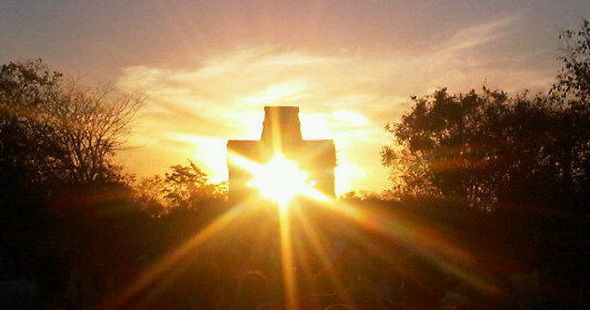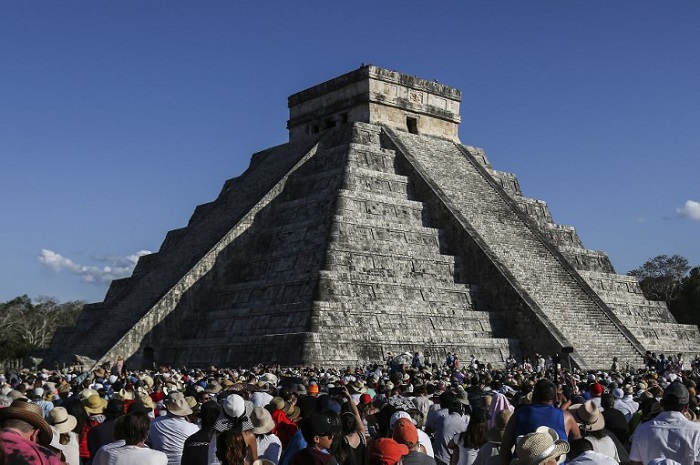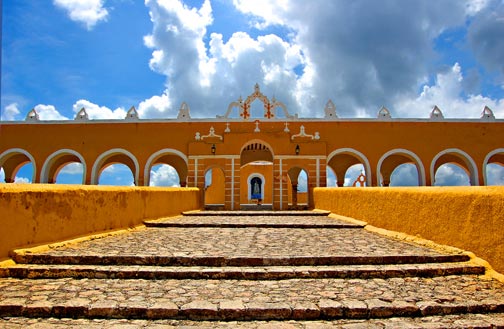The Yucatán peninsula of Mexico is a popular port of call for many cruises that are sailing in the Western Caribbean. Passengers are invited to spend their time ashore shopping, sight-seeing or relaxing on the beach. Entry fees to these sites are minimal and visitors are invited to pay with their credit card or through a Paypal or Neteller account.
The Carnival Cruise Line, the Holland American Line, the Norwegian Line and the Royal Caribbean Line of cruise ships have port stops in various locations in the Yucatán. These stops give cruise passengers the chance to experience a wide range of cultural, religious and historical locales.
Progreso
Progreso is one of the ports of call for many cruise ships. The port features a long beachfront with bars, seaside restaurants and water equipment rental shops. If you want to venture into the island you can but if you want to simply relax at the beach, Progreso is the place where you can sit out and relax under the sun or book a beachside massage.
Merida
If you want to do a bit of sight-seeing you can go on a sight-seeing tour of Merida. Merida is the capital city of the Yucatan state. One suggested stop in Merida itself is the Plaza Grande – the City’s Main Square. There you can see the San Adelfonso Cathedral which was built in the 15th century, and the crucifix that, according to legend, was carved from a tree that had burned for an entire night yet left enough wood unscathed so that it could be carved for the cross.
If you feel like taking a walk you might want to stroll down the Paseo de Montejo Avenue. This boulevard is lined with colonial French mansions that were built from limestone. The avenue shines in the sun. The houses feature sculpted roof edges, carved wooden doors, expansive balconies and majestic pillars.
For a history adventure you can head to the Grand Mayan museum to learn about Merida’s historical past. The museum displays include artifacts retrieved from nearby Mayan ruins including the Seven Dolls — famous figurines that were discovered at the Dzibilchaltun ruins.

Gran Museo del Mundo Maya (Photo: Google)
Dzibilchaltun
To continue your exploration of the ancient Mayan culture you can travel to the Dzibilchaltun ruins, just north of Merida. The Temple of the 7 Dolls is there as well as a large selection of items and descriptions of the ancient Mayan civilization and their religious practices.
The site also has a natural pool called Xcalah Cenote. This cenote was once a sacred place. The pool is formed from holes in limestone rock which, over time, filled with water. Today visitors can swim in the cenote.

Equinox sunrise at the Temple of Seven Dolls at Dzibilchaltun. (PHOTO: pinterest.com)
Uxmal
One of the most interesting and accessible of these sites is the Uxmal Mayan Ruins where you can find the Temple of the Magician and the ancient Mayan’s governmental palace. Depending on your time frame, there’s a public bus that takes about 2 hours and winds around a scenic old dirt road — you can just descend when you arrive. Alternately you can get a taxi to save a bit of time.
Uxmal depicts Mayan architecture, religious practices and engineering know-how. Uxmal is considered one of the most important archaeological sites of Maya culture. According to archaeologists, Uxmal is the Maya city that most represents the region’s dominant architectural style.
One of the most interesting features of the buildings at Uxmal are the snakes – both one-headed and two-headed snakes. The Mayans used snake imagery to create masks of the rain god,Chaac. The mask depicts big noses which represent the rays of the storms.

Pyramid of Magician – Uxmal. (Photo: noticieros-televisa.com)
Chichen Itza
Chichen Itza are recognized as the largest and the most important Mayan ruins in the Yucatan peninsula. It takes about 2 – 3 hours to reach Chichen Itza from Progreso which involves a trip through the jungle.
The image of the famous Kukulcan pyramid shows the 365 steps that ascent to the summit. This is the image that’s most widely associated with the Mayan civilization. The pyramid stands 100 feet above the ground and includes a ball court which is the largest in Mesoamerica. Ancient Mayans played ball here and vied for their lives — losers would be sacrificed to the Mayan gods.
Another well-known feature of Mayan civilization is also found at Chichen Itza – the oval observatory, which was used by the Mayans to study astronomy.

People surround the Kukulcan Pyramid at the Mayan archaeological site of Chichen Itza in Yucatan State, Mexico, during the celebration of the spring equinox on March 21, 2019. (AFP/Hugo Borges)
Izamal Town
Izamal Town is the Yucatán’s oldest colonial city. It is often called the “Yellow City” because houses in the town are painted yellow. Archaeologists believe that Izmal Town was built on top of Mayan temples.
The town combines unique architecture and archaeology. Access to the town is through a professional guided tour where you’ll hear about the history and culture of the town. The highlight of the visit is the Kinich Kamko pyramid, located in the town’s center. This is the largest and most famous pyramid in the northern region of Yucatan.

Yellow Convent in the city of Izamal Mexico (Photo: Google, Travel Report)
Haciendas
Most people have heard of a hacienda – an estate, generally the house of the landowner of a plantation – but few people have seen a real one. Now you can visit a genuine hacienda where you’ll marvel at the architecture, swim in the natural pool and relax on the lush green lawns.

Sotuta de Peón “Hacienda Viva” (Photo: haciendaviva.com)
The Progreso-area hacienda was built over a hundred years ago as the main house in a busy farming center that produced the famous “green gold” fiber.
The tour, which takes place on a wagon pulled by mules, takes you around the main house to give you a view of the historical architectural style. In addition to the “green gold” fiber production the hacienda was also a manufacturing center for henequen, a fiber that comes from the Agave plant. Henequen was used to make sacks, yarn, handbags, rugs and rope.
After you finish the guided tour you can take a dip in the haicenda’s nearby cenote.
Cruise passengers can get a real taste of Mexican life, culture and history through the many Yucatán port of call options.
The Yucatan Times Newsroom

